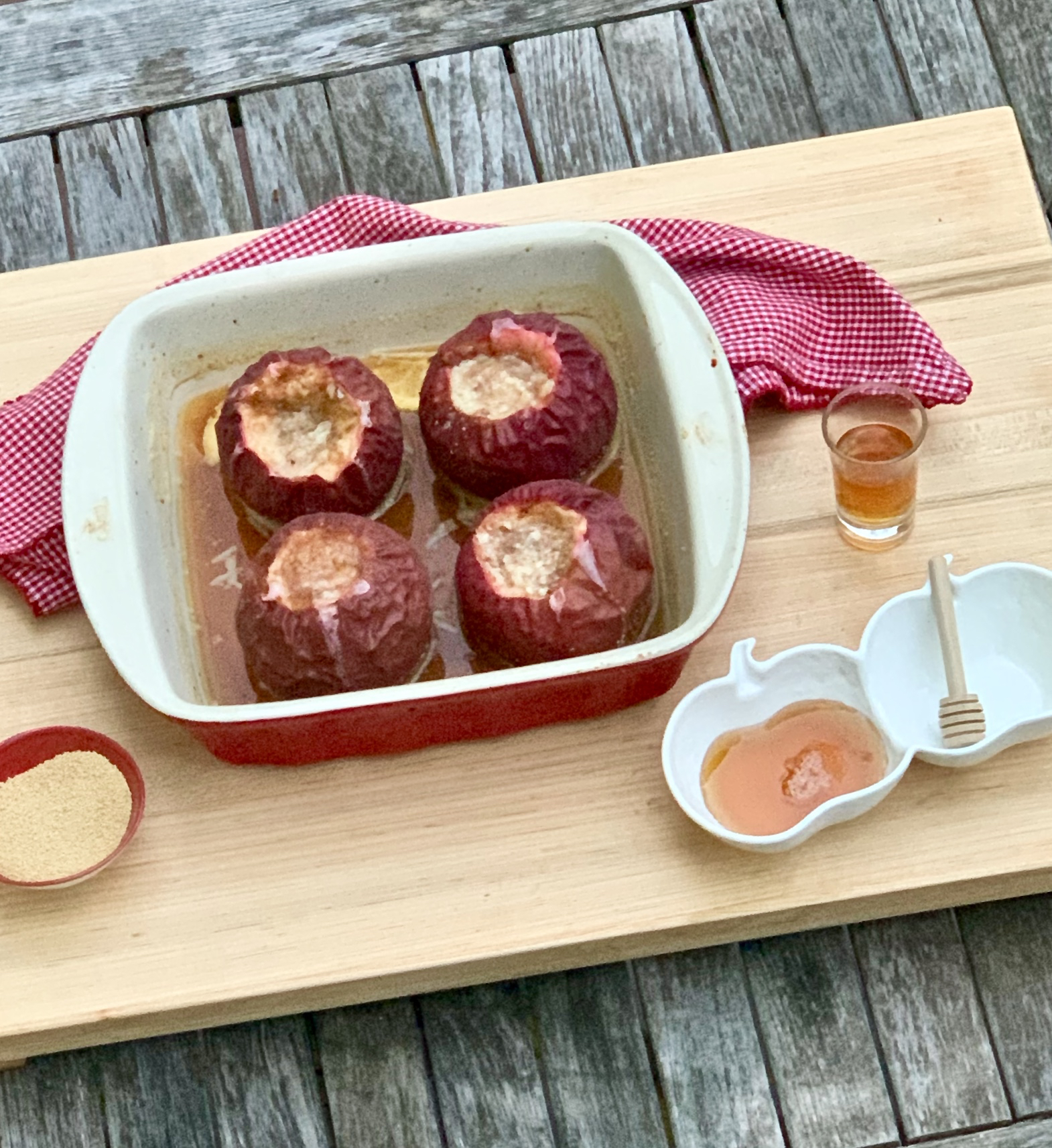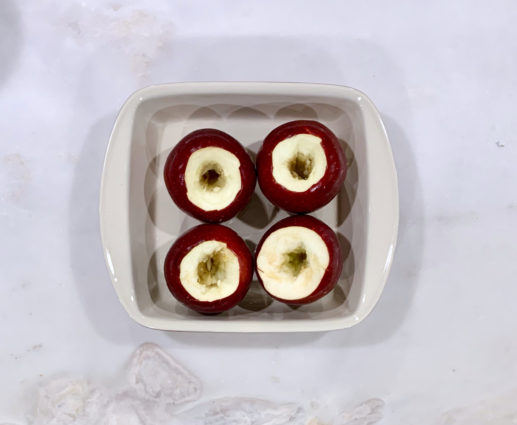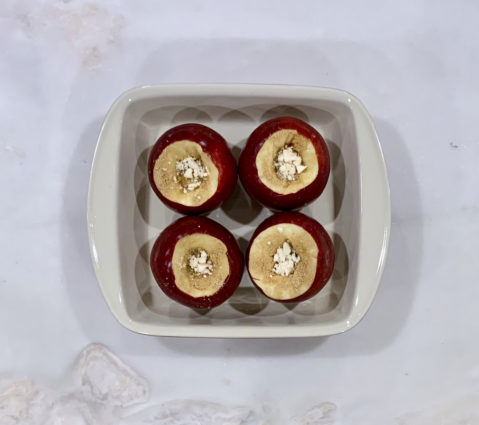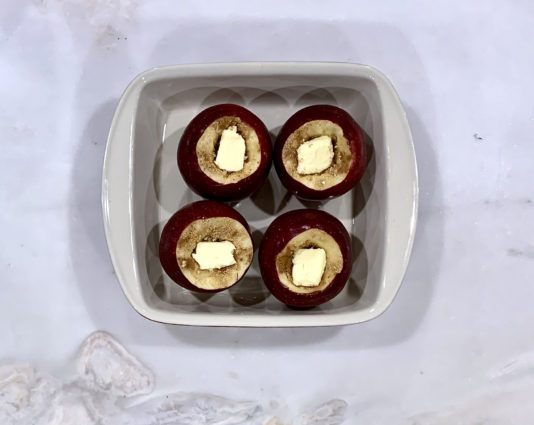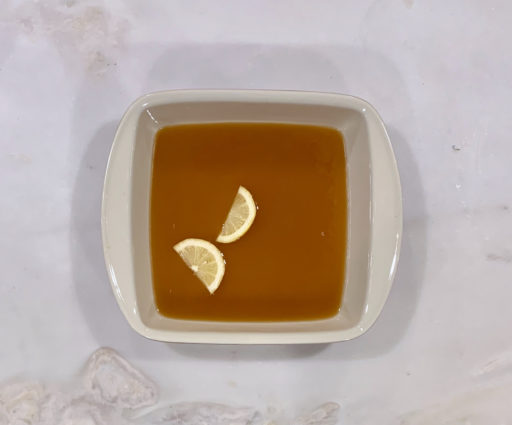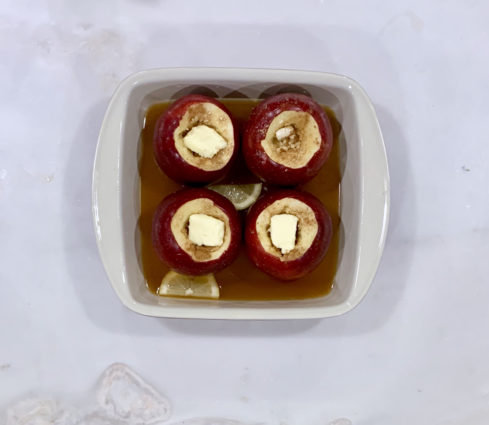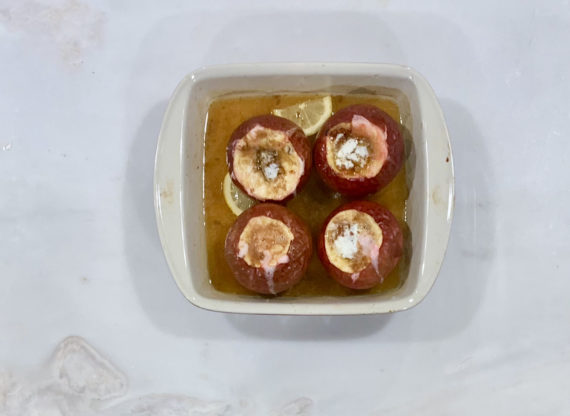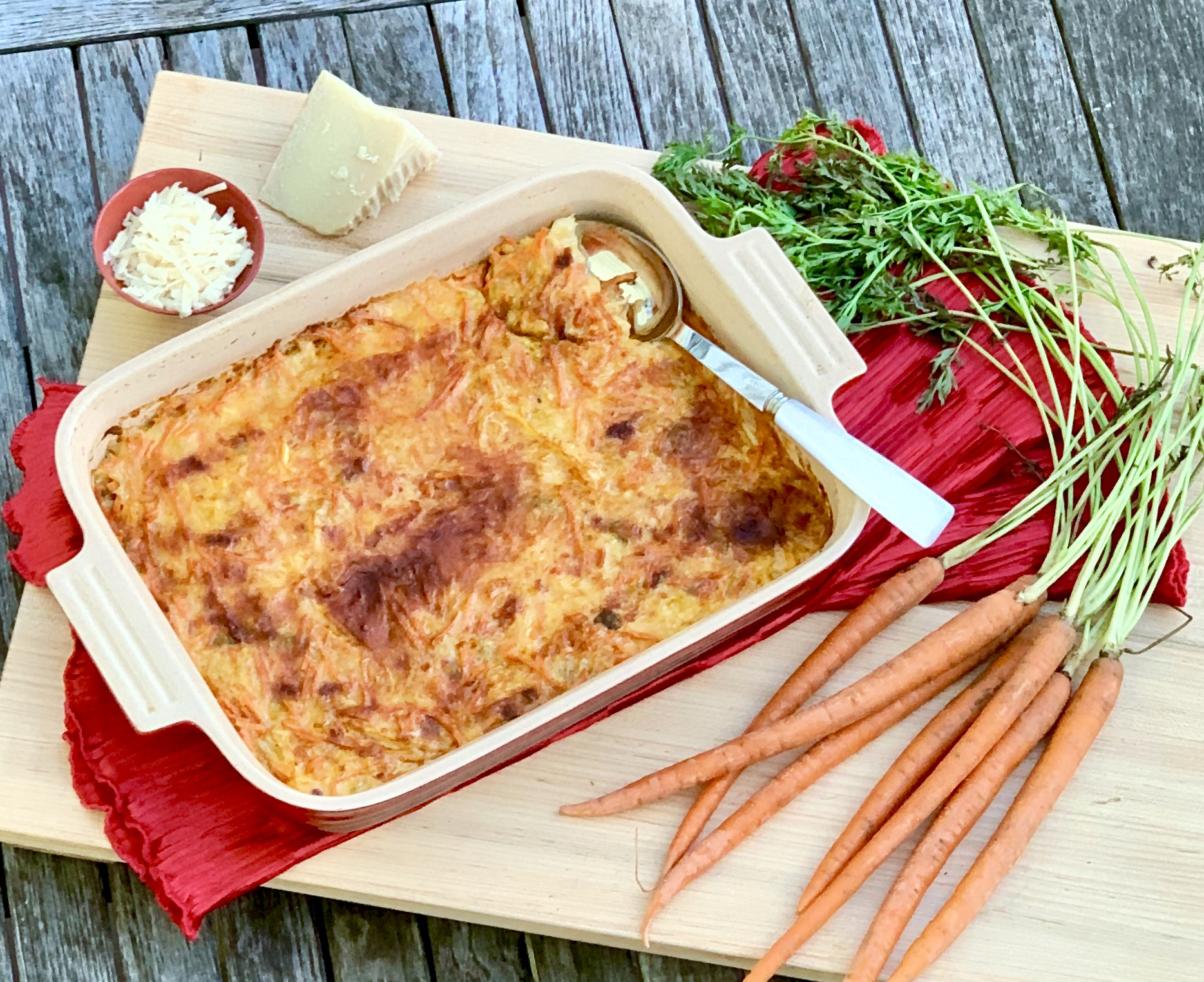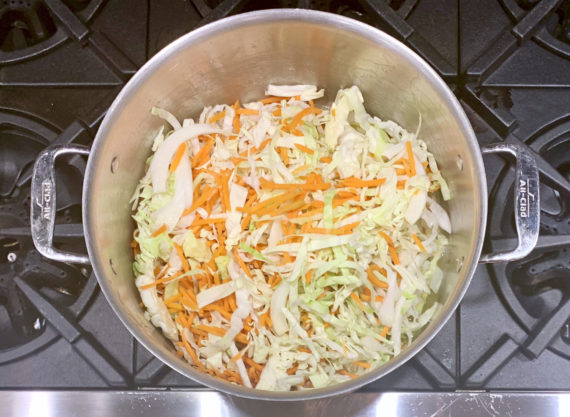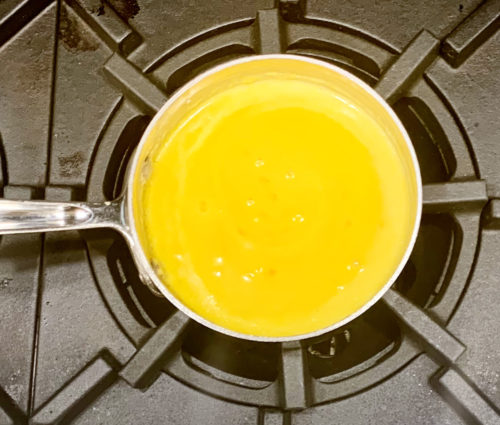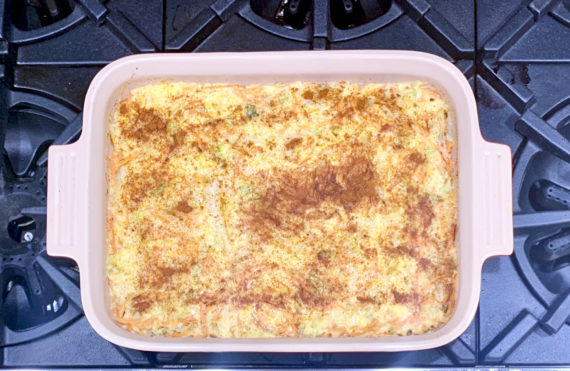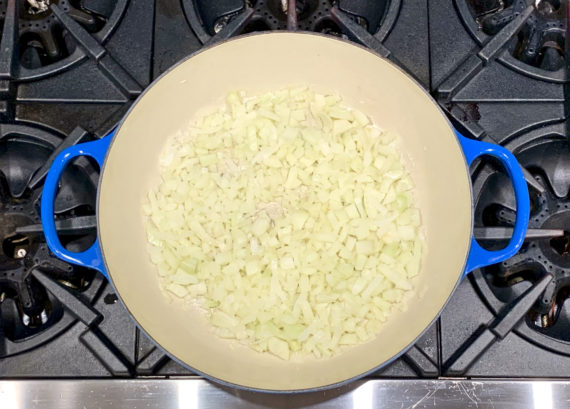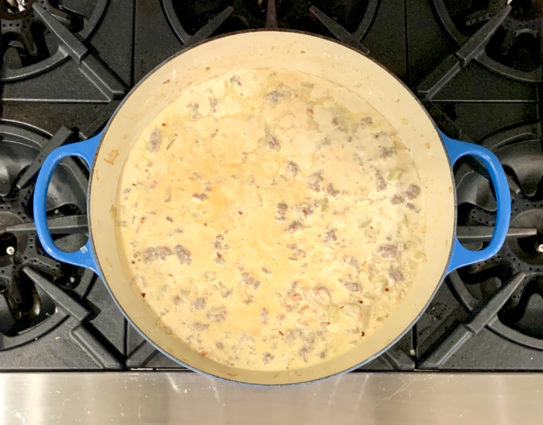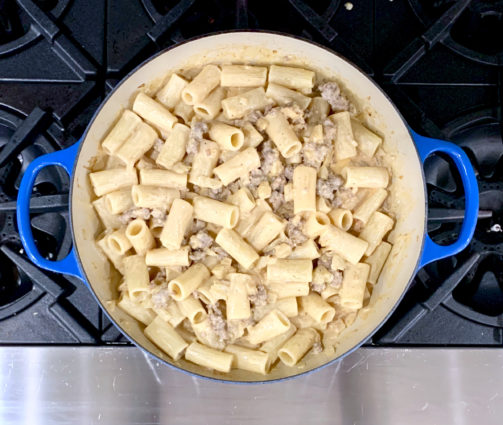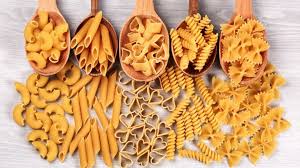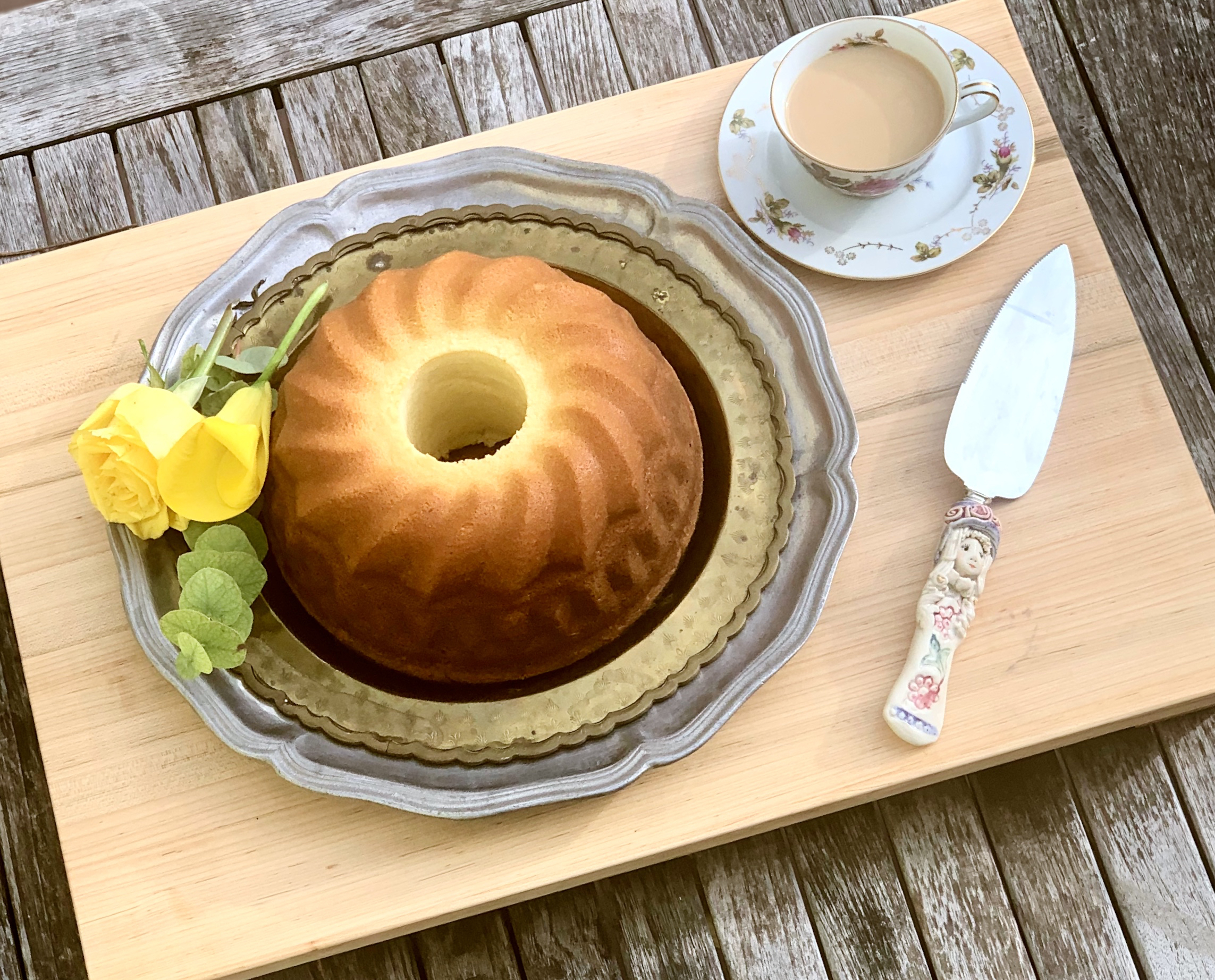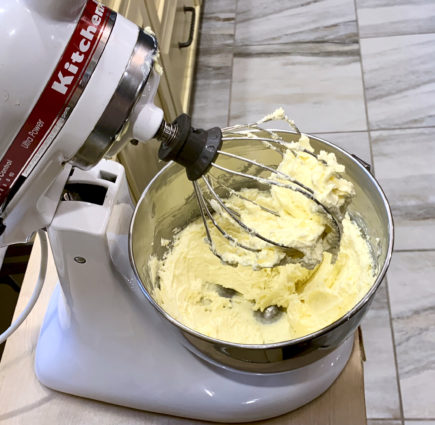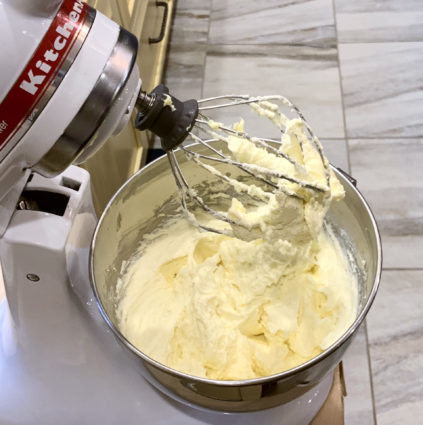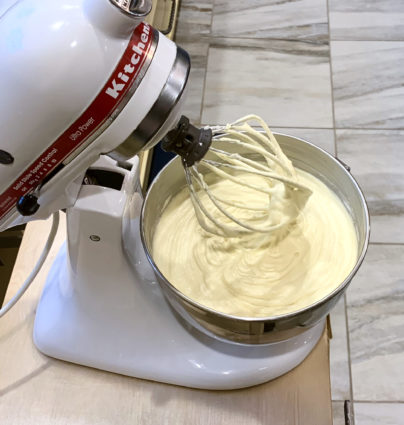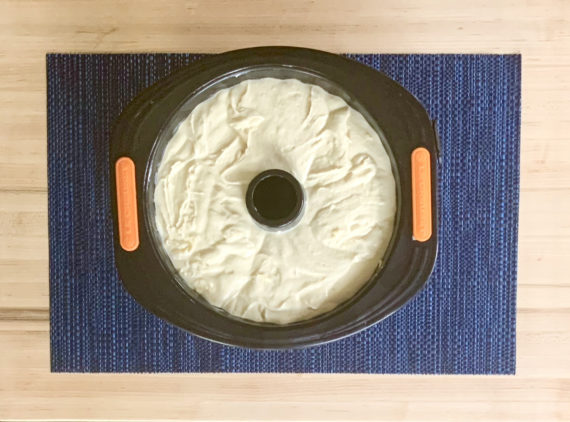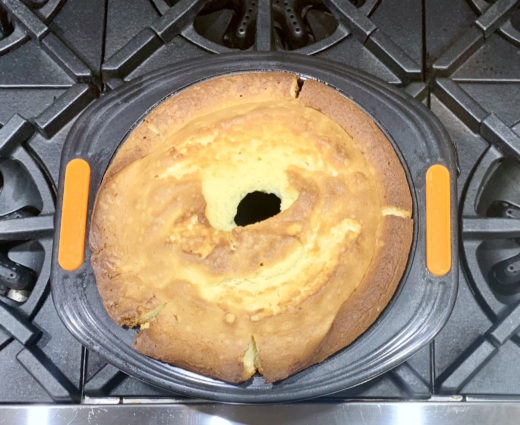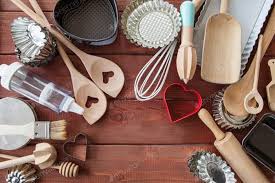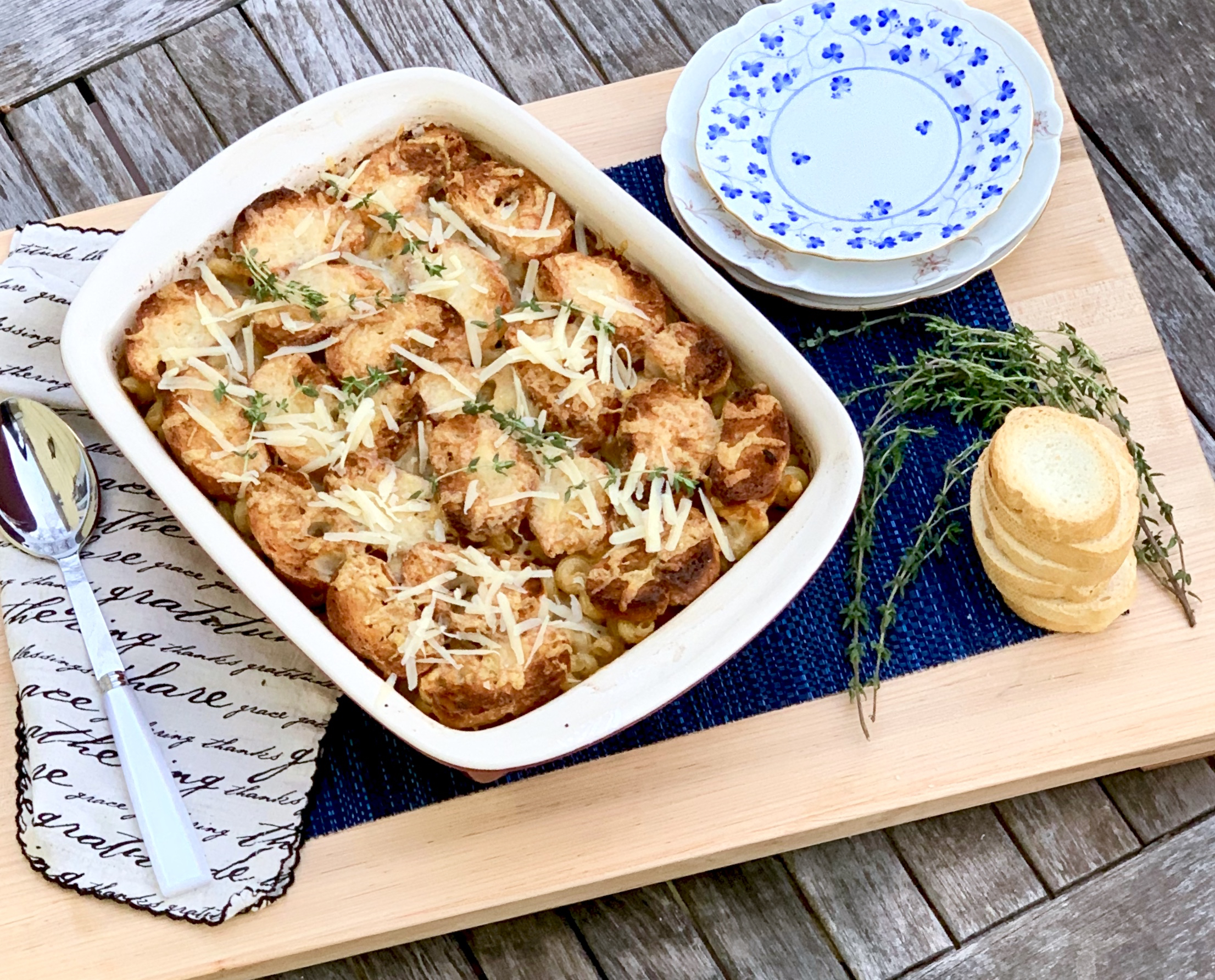
As I have surely mentioned before, my first job out of high school was teaching aerobic dance class — this was well before Zumba days, mind you! Aerobic dance was originated by a woman named Jackie Sorenson, who was from New Jersey. Being a New Yorker, New Jersey seemed like a foreign land to me. Little did I know I would end up here.
When I was asked to teach the class, I thought it would be easy. It was not. They had very strict requirements for their staff members. You had to maintain a certain weight, you had to be able to run an 8 minute mile, and you had to attend teacher training three times a year. Nowadays, these requirements would never be instituted. But I really wanted to teach, and I loved every minute of my ten years of it. Even though I’ve since stopped teaching, those requirements instilled a love of running that persists to this day.
When I moved to New Jersey, I began taking personal training lessons. During one of my sessions, my trainer taught me a bit of boxing, and I fell in love with the sport. Until that point, I had looked at boxing as a brutal sport. Learning it made me see it differently. I loved the fast pace of it, and as a woman, it empowered me. I will never be Mohamed Ali, but I put all my effort into it and became the best boxer I could be.
It was around that time that I started running more seriously too. I cannot run in the hot weather (my body does not like the heat), but during the fall and winter months, I am so happy to be out there. It also makes me feel strong and has made my body muscular again. Yet another reason to love the colder weather!
After a cold run, there is nothing better than a warm plate of comfort food. This is the perfect dish to satisfy those cravings. In fact, it is two classic comfort foods made into one. How amazing is that?! The instructions are perhaps longer than usual, so be sure to prepare your mise en place, and to dread through the recipe completely. The sauce is made with Gruyere cheese, which is used in French onion soup. The addition of the Cheddar makes it creamy and smooth. The onions are beautifully caramelized, giving it homey goodness. Add some vinegar for a little tang and you’re all set. This dish is so delicious and satisfying! It is a “must try now”.
This recipe is courtesy of NYT cooking and will serve 6 to 8 people who will love warming up with this beautiful homestyle mac and cheese
Ingredients for French Macaroni and Cheese:
Kosher salt
4 tablespoons unsalted butter, plus more for greasing the pan
2 pounds yellow or Vidalia onions, peeled, halved and thinly sliced
5 sprigs fresh thyme, plus more thyme leaves for garnish
1 fresh or dried bay leaf (optional)
Black pepper
1 pound cavatappi or elbow pasta
1 baguette, cut into 1/2-inch slices
1 garlic clove
2 tablespoons sherry vinegar, red wine vinegar or white wine vinegar
3 tablespoons all-purpose flour
4 cups whole milk
16 ounces Gruyère, grated (about 5 cups)
12 ounces white Cheddar, grated (about 4 cups)
Bring a large pot of salted water to a boil. (If you’re planning to bake the macaroni and cheese in a baking dish instead of a skillet, butter 9-by-13-inch baking dish or other 3-quart casserole.)
Meanwhile, in a deep, large (12-inch) ovenproof skillet, melt 2 tablespoons butter over medium-high heat.
Add the onions, thyme sprigs, and bay leaf, and season with salt and pepper.
Cover with a lid, baking sheet or foil and cook, stirring once or twice, until the onions are softened, 3 to 5 minutes.
Uncover and continue to cook on medium-high, stirring occasionally, until deep golden brown, 20 to 25 minutes.
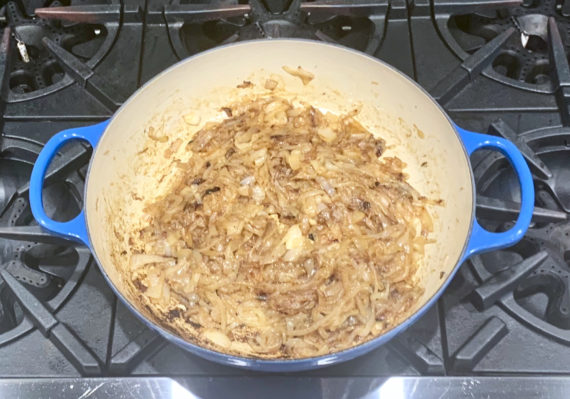
If the onions look dry, add a few tablespoons of water at a time to prevent them from burning, scraping up any browned bits that are stuck to the bottom of the skillet. (You will need to do this several times.)
While the onions are cooking, heat the oven to 450 degrees.
Cook the pasta in the boiling water until 2 minutes shy of al dente; drain and set aside.
Rub one side of each baguette slice with garlic.
When the onions are a deep golden brown, discard the thyme sprigs and bay leaf and deglaze the skillet with the vinegar until evaporated, scraping up browned bits as you go, about 30 seconds.
Add the remaining 2 tablespoons butter.
When melted, add the flour and cook, stirring, until the flour begins to stick to the bottom of the pan and has turned a light golden brown, about 3 minutes.
Slowly whisk in the milk and season with salt and pepper. Bring to a simmer, whisking often.
Reserve 1 cup of the Gruyère.
Carefully add the remaining Gruyère and all the Cheddar to the caramelized onion mixture and carefully stir until melted.
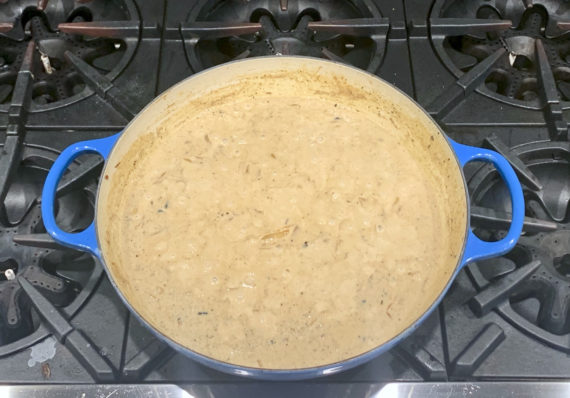
If your pan is big enough, add the cooked pasta and stir to combine, or combine the sauce and pasta in the prepared dish.
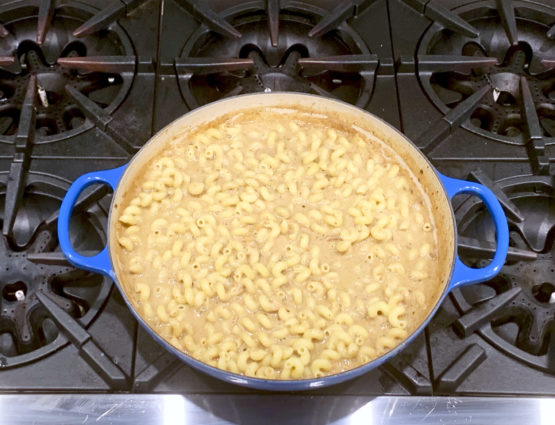
Spread the pasta mixture in an even layer in the prepared dish.
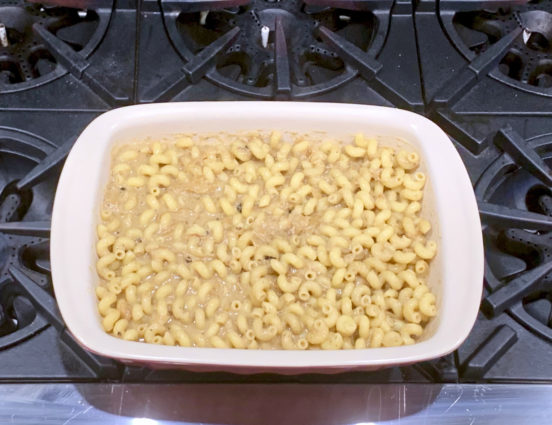
Top with the baguette slices, garlic-side up.
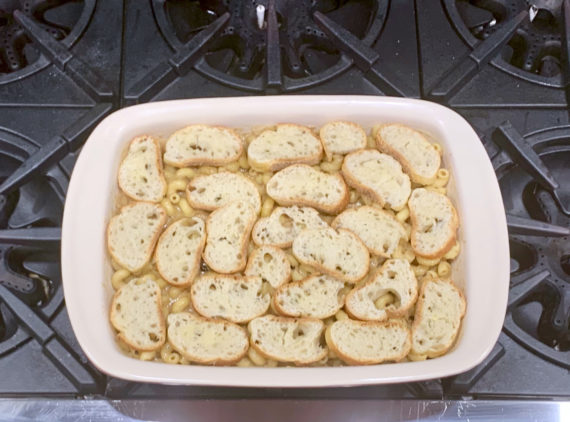
Sprinkle the toasts with the reserved 1 cup Gruyère and season with pepper.
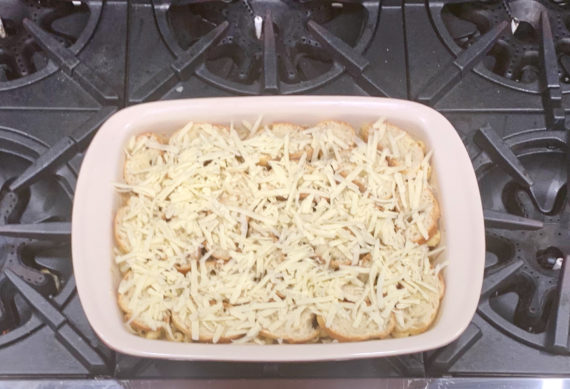
Place the skillet or dish on a sheet pan and bake until bubbly and brown in spots, 10 to 15 minutes.
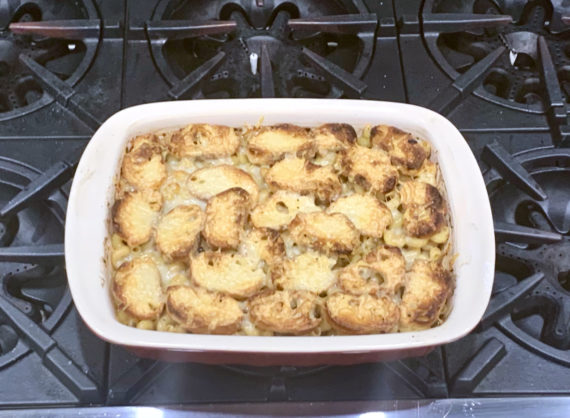
If you like a crispier top, broil for a few minutes.
Let cool slightly, then garnish with fresh thyme leaves.
This one isn’t as simple, but it sure is worth it!
